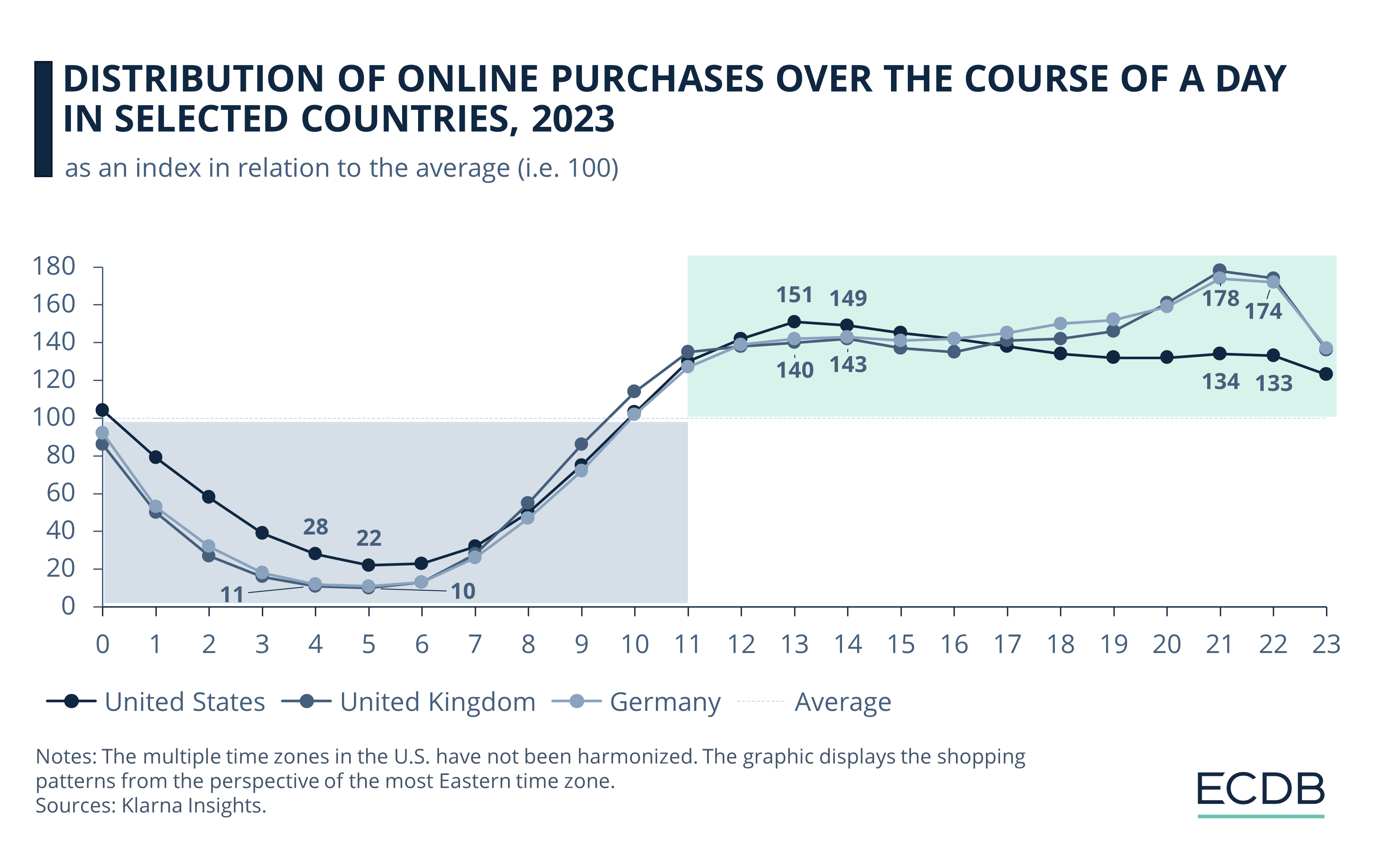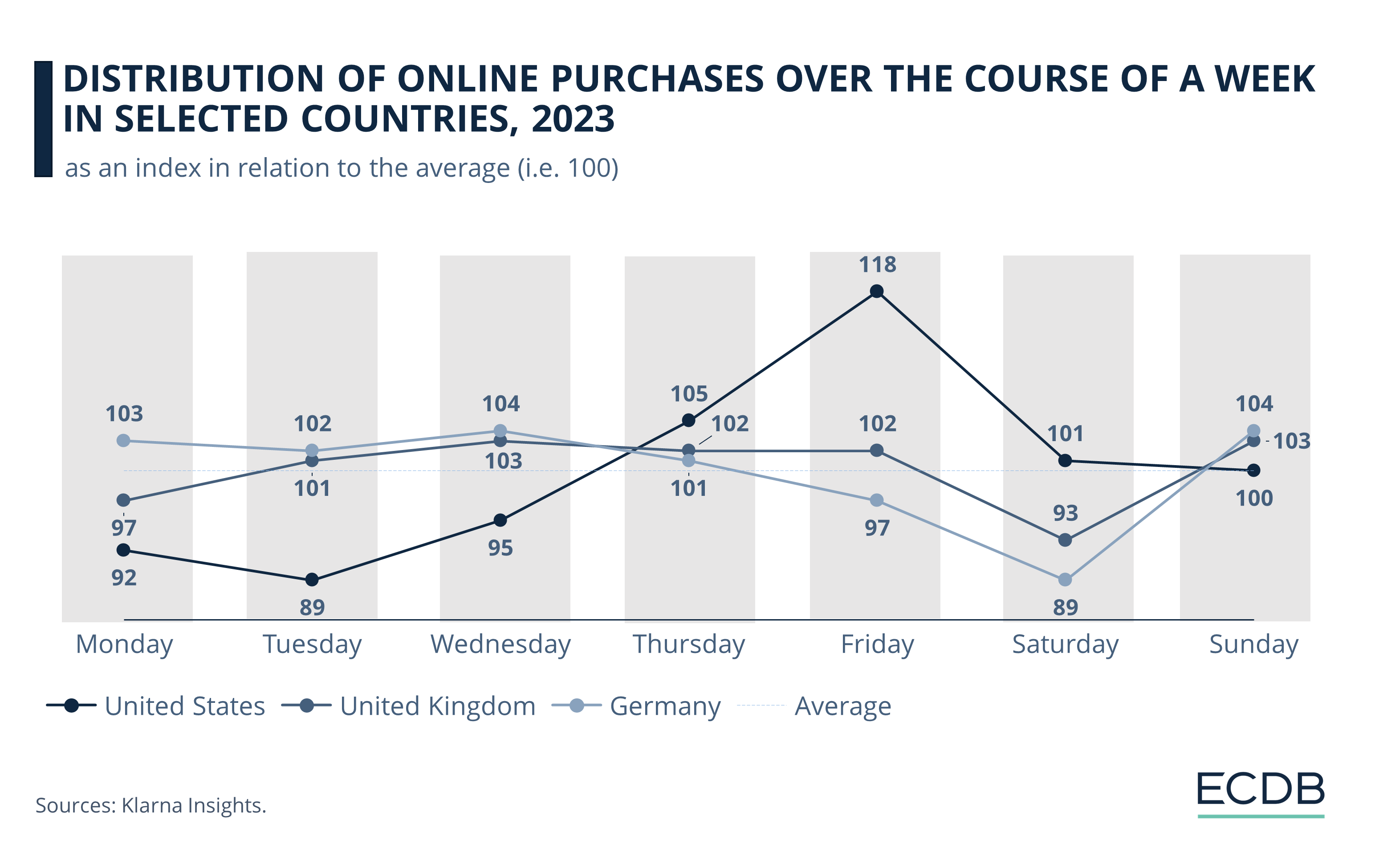Consumer Behavior in eCommerce
The Golden Hours of eCommerce Vary From Country to Country
Ever wondered when most of the people in the world prefer to shop online? Is online shopping most common on weekdays or weekends? And what about differences between countries? Learn more about the golden hours and days of eCommerce here.
August 14, 2024Online shopping is particularly popular among young people. According to Klarna’s latest Shopping Pulse insights, more than half (56%) of the Gen Z and Millennial would choose eCommerce over stationary retail if they had to pick one.
Additionally, a third or more of consumers in countries like Italy, Sweden or Germany would do most of their shopping online if they had the choice. In the U.S., the figure is as high as 43%.
Online shopping frequency has also reached remarkably high levels. According to Klarna's data, more than half of U.S. shoppers shop online on a weekly basis. But what does this mean in detail – when exactly are the golden hours of eCommerce?
Hourly Preferences Vary Most in the Evening
Klarna interviewed more than 1,000 consumers in each of its focus countries between January and March 2023 to find out at what time of day they usually shop online.

The results show that the second half of the day – the afternoon and evening hours – is the most popular time for consumers in the U.S., UK, and Germany to shop online. Within this second half, however, country preferences become more pronounced:
U.S. consumers, for example, are significantly less likely to shop online in the evening hours between 8 p.m. and 10 p.m., which is precisely the time when German and UK users shop online the most.
Note that the source did not adjust for the multiple time zones in the United States. Since the West Coast is three hours behind the East Coast, where the shopping hours were recorded, the afternoon (around 3 p.m.) is the most common time for online shopping on average across the country.
Friday Is the Peak eCommerce Day in the U.S.
In general, online shopping activity in the U.S. is lower than in Germany and the UK on Monday, Tuesday and Wednesday. It increases significantly on Thursday and peaks on Friday before declining over the weekend.

The differences in the number of online shopping activities throughout the week are much greater in the U.S. than in the other two countries. In the UK and Germany, people shop at similar rates every day from Sunday to Friday. Only on Saturday, and in Germany also on Friday, is there a notable decline.
Golden Hours of eCommerce: Wrap-Up
Most consumers in Germany and the UK shop online in the early evening from 7 p.m. onwards. Given that a typical working day ends between 6 p.m. and 7 p.m., it can be concluded that a substantial proportion of online shoppers in these countries prefer to place their online orders after working hours, especially given that they are more likely to shop online during the week and less likely to do so on weekends.
This is different in the U.S.: Consumers are more likely to shop online earlier in the day and more on Fridays and weekends than at the beginning of the week. To meet online shoppers where they are, these preferences serve as a more accurate assessment of user behavior.

Click here for
more relevant insights from
our partner Mastercard.
Related insights
Deep Dive
Who Are the Number One Shop Software Providers in Each European Country?
Who Are the Number One Shop Software Providers in Each European Country?
Deep Dive
The United States Takes the International Lead in eCommerce Revenue per Capita
The United States Takes the International Lead in eCommerce Revenue per Capita
Deep Dive
Valentine’s Day Drives eCommerce Revenues for Flowers & Gifts
Valentine’s Day Drives eCommerce Revenues for Flowers & Gifts
Deep Dive
Shopify Is the Most Used Shop Software Globally, But Magento Dominates in Europe
Shopify Is the Most Used Shop Software Globally, But Magento Dominates in Europe
Deep Dive
Why the Online Pharmacy Trend Has Continued Beyond the Pandemic
Why the Online Pharmacy Trend Has Continued Beyond the Pandemic
Back to main topics